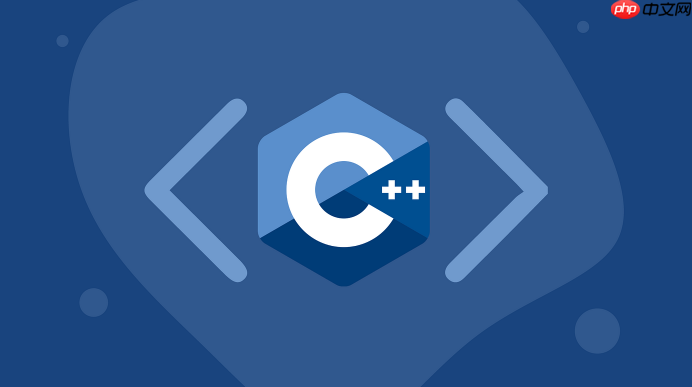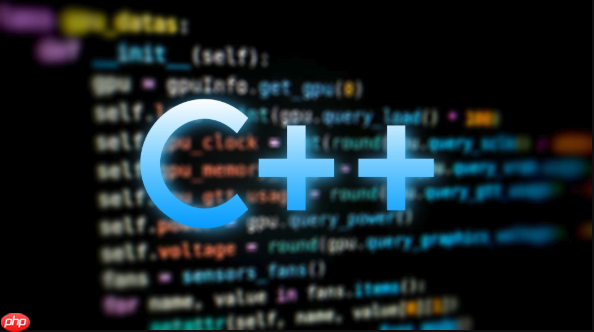c语言中链表通过结构体和指针实现,动态存储数据。1. 单链表节点包含数据域和一个指向下一个节点的指针;双链表节点包含数据域、一个指向前一个节点和一个指向下一个节点的指针。2. 单链表适用于单向遍历场景如队列或栈;双链表适用于频繁插入删除及反向查找场景如图形邻接表,但空间复杂度高。3. 避免内存泄漏需在不使用链表时释放所有内存,通过循环逐个释放节点,并确保删除节点时正确更新指针。4. 在已知位置情况下,单链表和双链表插入删除操作时间复杂度为o(1),查找特定节点最坏情况为o(n)。

C语言中,链表是通过结构体和指针实现的,它提供了一种动态存储数据的方式,可以灵活地增加或删除节点。单链表和双链表的主要区别在于节点间连接的方向,单链表只能从头到尾单向访问,而双链表可以双向访问。

解决方案

首先,我们需要定义链表节点的结构体。对于单链表,结构体包含数据域和一个指向下一个节点的指针;对于双链表,结构体包含数据域、一个指向下一个节点的指针和一个指向前一个节点的指针。
立即学习“C语言免费学习笔记(深入)”;

单链表的实现:
typedef struct Node {
int data;
struct Node* next;
} Node;
// 创建新节点
Node* createNode(int data) {
Node* newNode = (Node*)malloc(sizeof(Node));
if (newNode == NULL) {
perror("Failed to allocate memory");
exit(EXIT_FAILURE);
}
newNode->data = data;
newNode->next = NULL;
return newNode;
}
// 在链表头部插入节点
void insertAtBeginning(Node** head, int data) {
Node* newNode = createNode(data);
newNode->next = *head;
*head = newNode;
}
// 打印链表
void printList(Node* head) {
Node* current = head;
while (current != NULL) {
printf("%d ", current->data);
current = current->next;
}
printf("\n");
}
// 释放链表内存
void freeList(Node* head) {
Node* current = head;
Node* next;
while (current != NULL) {
next = current->next;
free(current);
current = next;
}
}双链表的实现:
typedef struct DoublyNode {
int data;
struct DoublyNode* next;
struct DoublyNode* prev;
} DoublyNode;
// 创建新节点
DoublyNode* createDoublyNode(int data) {
DoublyNode* newNode = (DoublyNode*)malloc(sizeof(DoublyNode));
if (newNode == NULL) {
perror("Failed to allocate memory");
exit(EXIT_FAILURE);
}
newNode->data = data;
newNode->next = NULL;
newNode->prev = NULL;
return newNode;
}
// 在链表头部插入节点
void insertAtBeginningDoubly(DoublyNode** head, int data) {
DoublyNode* newNode = createDoublyNode(data);
newNode->next = *head;
if (*head != NULL) {
(*head)->prev = newNode;
}
*head = newNode;
}
// 打印链表
void printListDoubly(DoublyNode* head) {
DoublyNode* current = head;
while (current != NULL) {
printf("%d ", current->data);
current = current->next;
}
printf("\n");
}
// 释放链表内存
void freeListDoubly(DoublyNode* head) {
DoublyNode* current = head;
DoublyNode* next;
while (current != NULL) {
next = current->next;
free(current);
current = next;
}
}选择单链表还是双链表,取决于具体的应用场景。单链表结构简单,占用空间较小,适合于只需要单向遍历的场景,比如实现简单的队列或栈。双链表则因为可以双向遍历,所以在需要频繁进行插入、删除操作,并且需要反向查找的场景下更为适用,例如实现高级数据结构如图形的邻接表。但双链表需要额外的空间存储前驱指针,所以空间复杂度较高。
内存泄漏是链表操作中常见的问题。要避免内存泄漏,最关键的是在不再使用链表时,必须释放链表所占用的所有内存。这通常通过一个循环遍历链表,逐个释放节点来实现。此外,在删除节点时,也需要特别小心,确保正确更新指针,避免出现悬挂指针。
在单链表中,如果已知要插入或删除节点的位置(即指向该节点的指针),插入和删除操作的时间复杂度为O(1)。但如果需要先找到插入或删除的位置,最坏情况下需要遍历整个链表,时间复杂度为O(n)。双链表在已知节点位置的情况下,插入和删除操作的时间复杂度同样为O(1),并且由于可以双向遍历,查找特定节点的操作在某些情况下可能比单链表更快。

C语言怎么学习?C语言怎么入门?C语言在哪学?C语言怎么学才快?不用担心,这里为大家提供了C语言速学教程(入门到精通),有需要的小伙伴保存下载就能学习啦!

Copyright 2014-2025 https://www.php.cn/ All Rights Reserved | php.cn | 湘ICP备2023035733号